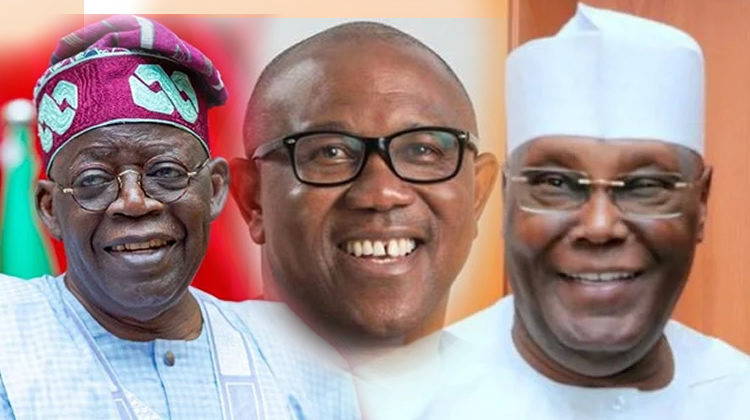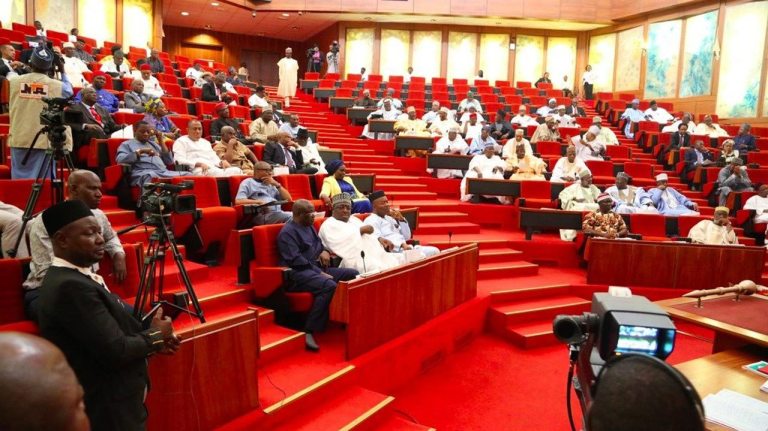In all 36 states, less than half of the eligible population turned out to vote, and only Jigawa state had a turnout above 40 per cent.
On February 25, Nigerians went to the polls to elect their preferred presidential candidates in the seventh general election since the end of military rule in 1999.
Since the beginning of the Fourth Republic, Nigeria has enjoyed uninterrupted democracy for 24 years, the longest stretch since its independence in 1960. Up to 93 million people in Africa’s most populous country and biggest economy registered to vote ahead of the 2023 elections.
The election produced Bola Tinubu, the candidate of the ruling All Progressives Congress (APC), as Nigeria’s next president, extending the APC’s rule in Africa’s largest democracy.
Mr Tinubu, 70, scored 8,794,726 votes. His closest rival, Atiku Abubakar of the Peoples Democratic Party (PDP), scored 6,984,520 votes to emerge second in the election. Labour Party’s Peter Obi got a total of 6,101,533 votes while Rabiu Kwankwaso of the NNPP came fourth with 1,496,687 votes.
Turnout
The national voter turnout was 29 per cent; no election had a lower participation rate in the six decades of Nigeria’s independence. Of the 93.4 million registered voters this year, 87.2 million people collected their Permanent Voters Card while the total number of actual voters on election day was only 24.9 million. Barely 9 million people voted for President-elect Tinubu to govern 220 million Nigerians.
In each of the 36 states, less than half of the eligible population turned out to vote, and only Jigawa State had a turnout above 40 per cent. While the northwestern state had a 41 per cent turnout, Plateau State recorded a 40 per cent turnout.
In the three largest states based on voter registration — Lagos, Kano and Rivers — less than a third of the eligible population voted. Rivers turnout was a shameful 16 per cent, the lowest in the country, despite producing a lot more votes in past elections, which though were criticised as violent and irregular by observers.
Only about ten states recorded more than 30 per cent turnout and participation in other states was a little more than 20 per cent.

Election participation in Osun was 39 per cent. This was followed by Adamawa – 35 per cent, Gombe – 34 per cent, Bauchi – 32 per cent, Ekiti – 32 per cent, Kaduna – 32 per cent, Katsina – 31 per cent, FCT – 30 per cent, and Niger – 30 per cent.
Voter turnout in each of Benue, Kano, Kebbi, Kwara, and Nasarawa states was 29 per cent. Ondo and Sokoto states recorded 28 per cent turnout each.
On the other hand, Zamfara had 27 per cent followed by Oyo at 26 per cent; Taraba at 26 per cent; Akwa Ibom at 25 per cent; and Kogi at 25 per cent.
Meanwhile, the trio of Anambra, Cross River and Edo had a 24 per cent turnout performance. Southwestern Ogun State recorded 23 per cent; Enugu 22 per cent; Ebonyi 21 per cent; Borno 20 per cent; Delta 20 per cent; and Imo 20 per cent.
Lagos, Nigeria’s most populous state and the state with the highest number of eligible voters recorded an abysmal 19 per cent voter turnout amid reports of violence and voter suppression. The state was just a little above southeast Abia state where turnout was 18 per cent.
Participation was worse in Bayelsa and Rivers states with only 16 per cent of people turning out to vote in the oil-rich states.
States with highest number of votes cast
Although less than a third of the eligible population voted in Kano, the state had the highest number of votes with 1.74 million total votes cast. This was followed by Kaduna where 1.4 million people voted.
The total votes cast in Lagos was 1.3 million; Plateau 1.1 million and 1.09 million in Katsina.

Only the five aforementioned states recorded more than one million votes in the 25 February presidential elections.
Total votes in Jigawa was 954,805; Bauchi 882,546, Oyo 851,956, Niger 813,355, and Benue 797,762.
Official data shows that at the bottom of the list is Imo State with 478,652 total votes; Kogi with 476,038 votes, Enugu – 468,891 votes, Cross River – 416,968, Yobe – 397,331, Abia – 381,683, Ebonyi – 337,341, and Ekiti – 314,472.

Bayelsa State had the least number of votes cast with 173,111.
Voting patterns across regions
With 26.5 per cent, the North-west had the highest proportion of votes cast in the presidential election. This was followed by North-central with 17.2 per cent; South-west with 16.3 per cent; North-east with 13.2 per cent; South-south with 11 per cent; and South-east with 8.7 per cent.

In terms of volume, the North-west had the highest number of votes with about 6.6 million votes, followed by the North-central with above 4.5 million votes.
The South-west, with about 4.25 million votes, placed third, while the North-east followed with about 3.4 million votes.
The South-south had 2.85 million and the South-east 2.2 million votes.
How candidates fared in each region
Bola Tinubu, the candidate of the APC secured the highest number of votes and a breakdown of data shows that he gained more votes than his rivals in three out of the six geopolitical zones. Mr Tinubu won in his South-west home; North-west and North-central.
In the three other regions he didn’t win, the former Lagos governor came second. This gave him the spread to be the only candidate that gained 25 per cent of votes in 29 states. Mr Tinubu also won at least one state in each of the regions except South-east.
LP’s Mr Obi won two regions (South-east and South-south) while PDP’s Atiku scored more votes in only one region (North-east). Mr Obi trailed Mr Tinubu in the North-central while Atiku came second in the South-west and North-west.
Overall, Mr Tinubu scored 37 per cent of votes in the elections. His main challenger, Atiku got 29 per cent of the votes while Mr Obi scored 25 per cent.
Out of the 6.6 million total votes in the North-west, Mr Tinubu got 2.65 million, placing him ahead of his closest contestants. This also means the APC candidate got 40 per cent of the votes in the North-west. Mr Atiku, who won four out of seven states in the region, gained 34 per cent (2.32 million) of the total votes.

Rabiu Kwankwaso of the NNPP got 1.2 million or 19 per cent of the total votes in the North-west. Mr Obi came fourth after securing 5 per cent of votes.
In the North-Central, 4.56 million people voted and APC’s Mr Tinubu got 1.7 million (41 per cent) of the total votes. Mr Obi came second with 1.4 million (33 per cent) while Atiku came third with a little above 1.1 million votes (24 per cent).
Similarly in the South-west, Mr Tinubu got 2.2 million votes, representing 54 per cent of the total votes in the region. The APC candidate also won four out of the six states in the region. PDP’s Atiku came second with 941,941 votes (21 per cent) and won in one state while Mr Obi finished third in the South-west, gaining 19.5 per cent of the votes and winning in one state.
Then in the North-east, former vice president Atiku got 1.7 million votes (56 per cent). The PDP candidate won five out of six states in the region. Mr Tinubu scored 1.1 million votes (32 per cent) while Mr Obi got 315,107 votes (10 per cent).
In the South-south, Mr Obi got 1.2 million (44 per cent) votes, followed by Mr Tinubu with 799,957 votes (29 per cent) and Atiku with 717,908 votes (26 per cent).
Labour Party candidate Mr Obi won all five states in the South-east. The former Anambra governor gained 1.9 million votes out of 2.2 million votes in the region. Mr Obi’s votes represent 89 per cent of the total votes.
Mr Tinubu trailed with 127,605 votes (5.8 per cent) while Atiku got 91,198 votes (4 per cent).
PREMIUM TIMES







